Sky-dancing marsh harriers
North Norfolk, April 2009
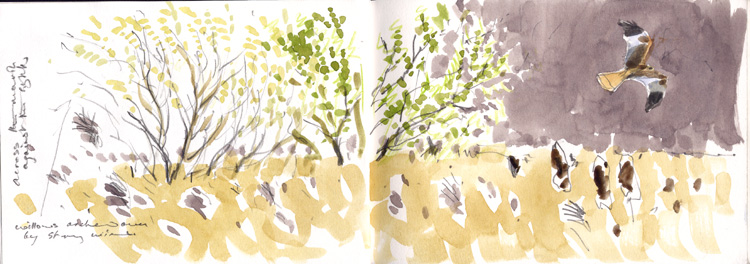 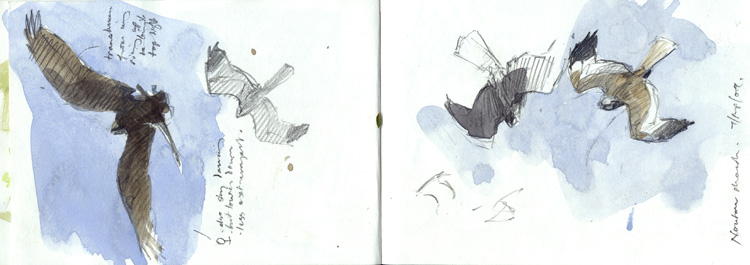 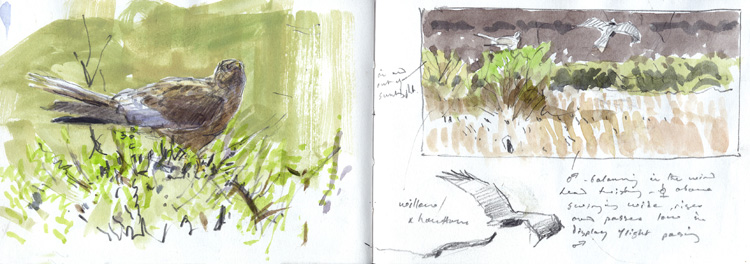 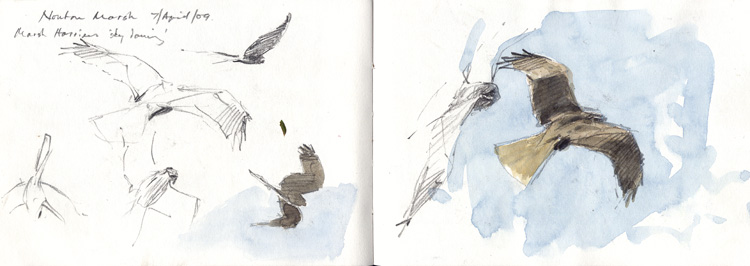 (Above) A5 sketchbook spreads. (Right) A3 sketchbook studies of sky-dancing marsh harriers. Both the female and male birds took to tumbling about swooping and diving down low across the reeds, which surprised me as I thought that only males pefomed this kind of courtship display. But it was the males that climbed to the greatest heights and mewing loudly dropped with wings folded almost falcon-like, then pulling up and floating on the wind before dropping again and risng just as suddenly rolling over and twisting in the climb, with each manoeuvre losing height until ending with a sweeping pass over the marsh. Spectacular! Return to Homepage |
After a
period of cold spring weather and some long studio sessions, there was an
opportunity and a need a couple of weeks ago to get up to North Norfolk as a
run of bright days were in prospect. 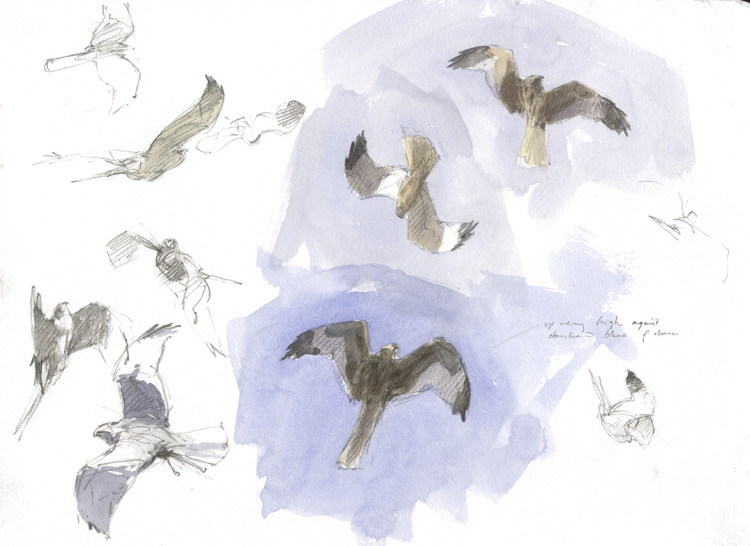 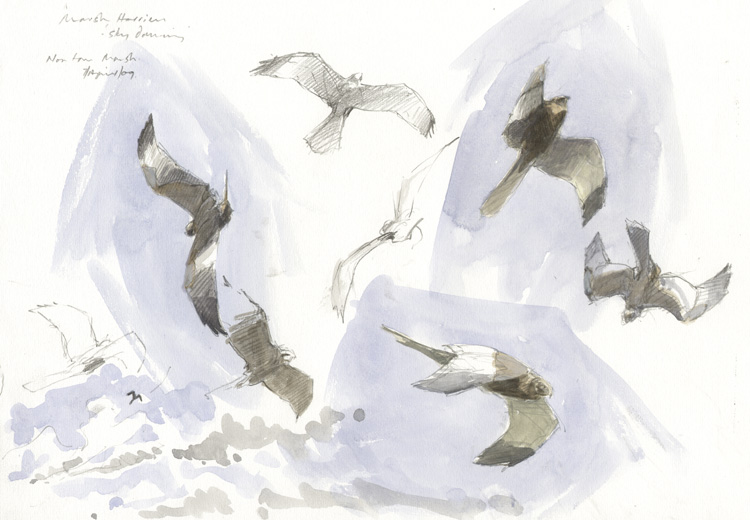 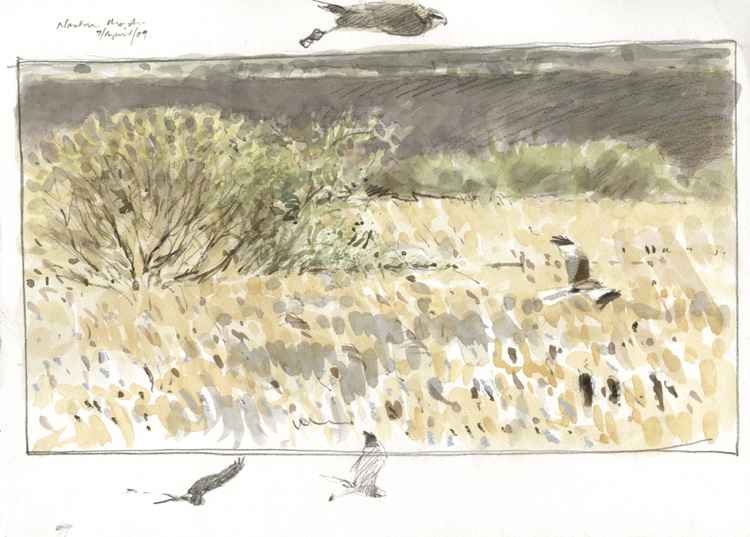 |